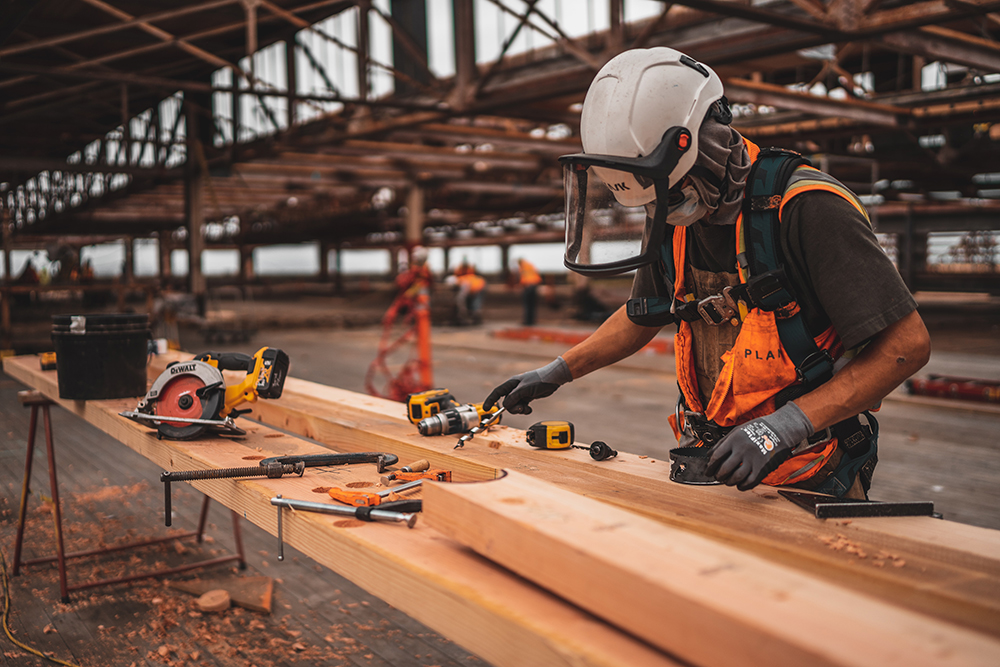
4 Technologies Trending for Building Materials Manufacturers
Challenges like growing demand for sustainable practices, rising raw material costs, and a volatile construction market have forced the building materials industry to adapt quickly over the past few years. Right now, new technology and design strategies are transforming how buildings are made.
These technologies offer significant benefits — like reduced cost, minimal waste, and improved sustainability — that building materials manufacturers need to be aware of.
1. Smart Building Materials
Smart building materials are adaptive and change their properties based on changes in environmental conditions.
Smart glass, for example, can change transparency as needed to maximize the energy efficiency of a building.
In the summer months, when building owners need to keep a home or office cooler, an automated system can turn the glass translucent or opaque. This allows the glass to absorb solar radiation and prevent sunlight from heating the building. In winter months, the windows will “open,” turning transparent and letting in as much light and heat as possible.
These changes are often coordinated by a smart building system that may also be adjusting an intelligent HVAC system, or smart light fixtures that alter light output based on time of day and room occupancy.
Other smart materials include self-healing materials, self-adjusting concrete, and transparent metals. These materials may help to create more sustainable buildings that cost less to repair, maintain, and operate.
2. Additive Manufacturing
Additive manufacturing technologies — like 3D printing — help businesses create construction materials in a way that minimizes waste. Large, specialized 3D printers can be used in factories or on-site to print structures like concrete panels for new housing units.
This process can enable businesses to significantly accelerate the construction process. While 3D printing can’t fully automate construction yet — workers are still needed to insert rebar into printed concrete structures — new materials may soon change this.
Certain thermoset composites, for example, harden into stonelike structures as they cure, and offer strength that’s similar to rebar-reinforced concrete. These materials could help to further streamline construction.
3. Laser Measures
Precision in building materials is essential. A new structure, if it’s off-spec even by a few centimeters, can mean significant waste and setbacks as workers correct the structure.
Laser measures are alternatives to measuring tape and other “analog” tools. They use lasers to provide construction workers with accurate measurements on the construction site.
These tools offer a few key advantages over conventional measuring tools. Laser measures typically provide more accurate readings than conventional materials and can also be adjusted more easily. This can reduce the amount of time it takes to capture measurements in a large area, helping businesses to scale up construction operations.
Combined with other, more advanced measurement-taking methods — like construction-site VR and AR — these measures can help make construction much more efficient.

Composite roofing shingles are an example of building materials manufacturers technologies.
4. Sustainable Materials
The rising demand for sustainable materials has had a major impact on the building materials market. Materials like bamboo, composite roofing shingles, and reclaimed wood have emerged in the past few years as three options for businesses wanting to provide sustainable materials options to customers.
These materials typically have a much lower carbon footprint than comparable materials, like concrete, asphalt, or brick. Composite shingles, for example, are made from a combination of materials, often slate, laminate, and wood. They provide shingles with an appearance similar to ceramic or asphalt shingles, but that are lightweight and have a low carbon cost.
In some cases, they may also help a construction company drive down costs and reduce waste. Reclaimed wood, for example, enables construction companies to find a new life for wood that would have otherwise gone to a landfill.
The unique appearance of reclaimed wood has also made the material popular with some consumers — meaning that offering the material could enable building materials businesses to thrive in certain niche markets.
How New Technology Is Changing the Building Materials Market
These innovations are helping building materials manufacturers adapt to a changing construction market. Additive manufacturing techniques and measurement tools like laser measures are transforming how construction companies approach their work.
At the same time, the growing popularity of sustainable materials, like smart glass and composite shingles, is making it easier for providers to offer sustainable material options to their customers.
*This article is written by Devin Partida. Devin is a tech writer with an interest in the IIoT and manufacturing. She is also the Editor-in-Chief of ReHack.com.






